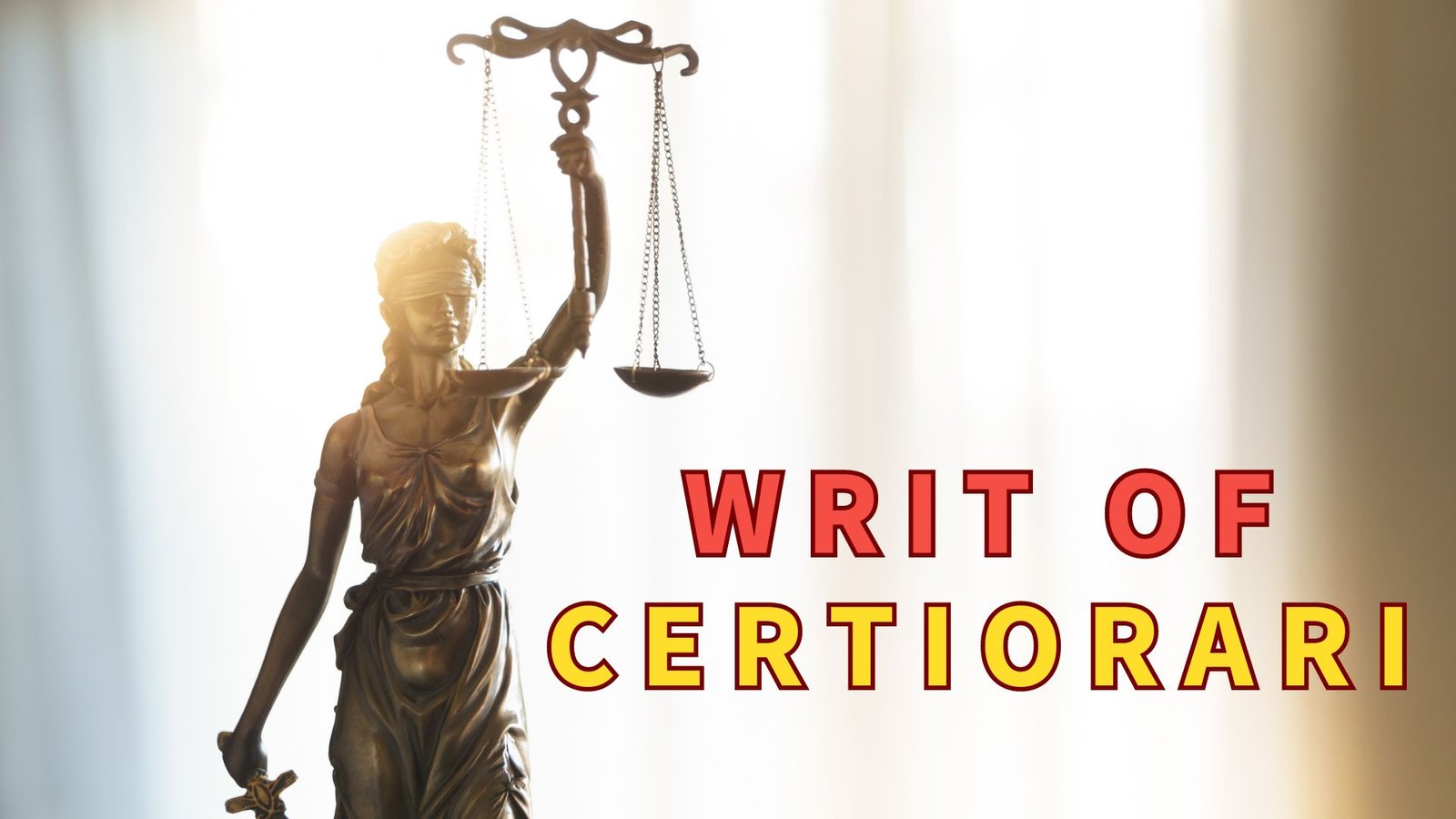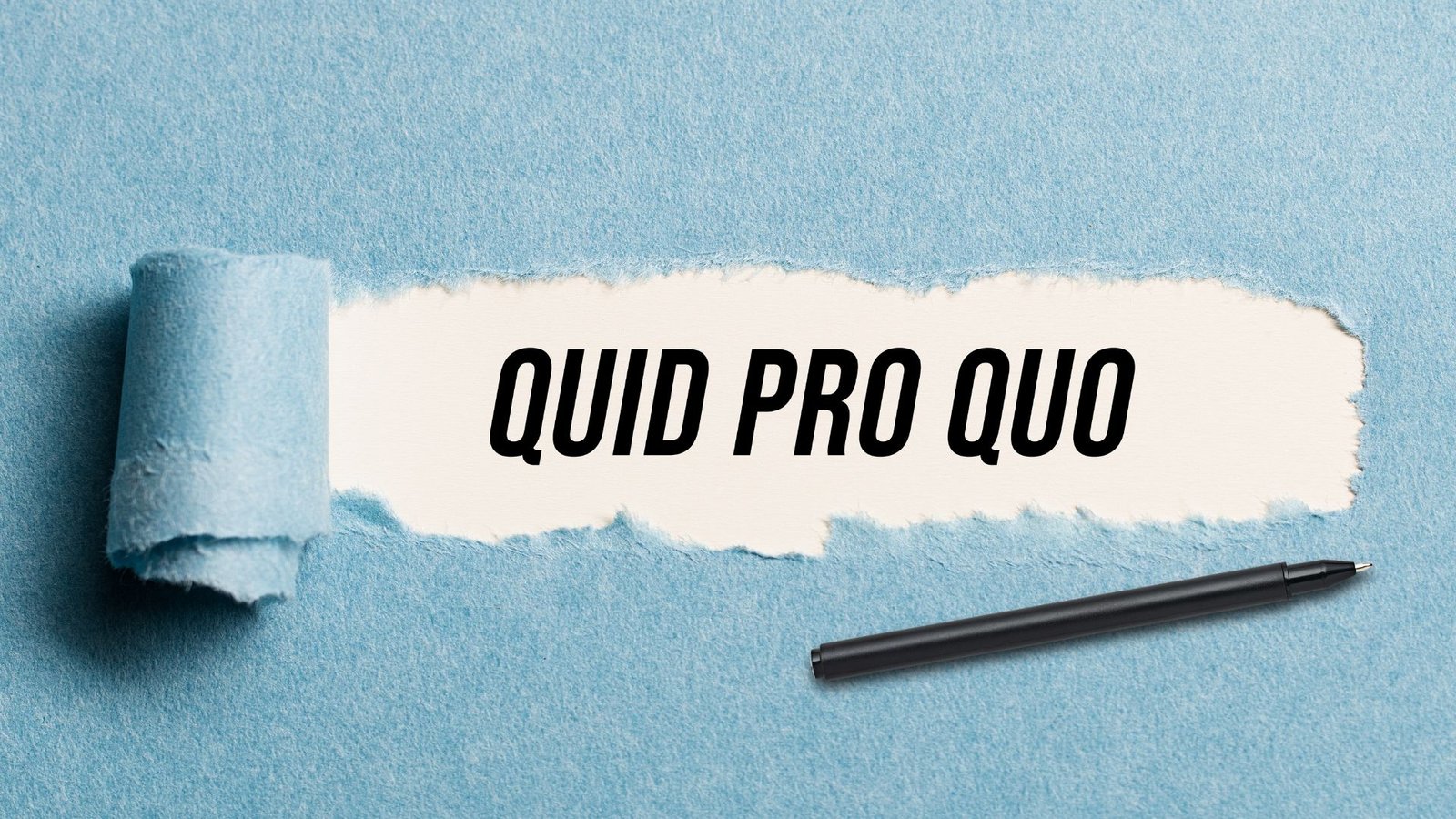On this page you will read detailed information about the Writ of Certiorari Process.
As you prepare your petition for a writ of certiorari, fully grasp the purpose and process behind this complex legal mechanism. Understanding when and how the Supreme Court grants certiorari enables you to craft an air-tight petition demonstrating why the Court should accept your case on appeal. Walk through the key factors in a compelling cert petition – split among the Court’s rules and unwritten considerations based on tradition and tendency. Learn the most fatal mistakes made at this stage from both procedural errors as well as substantive gaps in legal reasoning. With the odds overwhelmingly not in your favor, meticulous attention to every element remains imperative. Equip yourself to navigate this rigorous path to the Supreme Court.
What Is a Writ of Certiorari?
A writ of certiorari is a request for a higher court to review the decision of a lower court. The U.S. Supreme Court uses certiorari to review decisions made by federal appeals courts and state supreme courts. When the Supreme Court grants certiorari, it agrees to hear the case.
The losing party in a case will typically petition the Supreme Court for certiorari. To grant cert, at least four of the nine justices must vote to accept the case. The Supreme Court receives over 7,000 cert petitions each term but only hears oral arguments in about 150-180 cases. Cert is rarely granted, as the Supreme Court prefers to focus on cases that could have national significance or clarify important points of law.
When filing a petition for certiorari, the filer, known as the petitioner, asks the Supreme Court to review the lower court’s decision to determine if it conflicts with decisions from other courts or raises an important issue of law. The petition must be filed within 90 days of the lower court’s ruling and follow the Rules of the Supreme Court regarding its content and formatting. Opposing parties, known as respondents, can file a brief opposing the petition, arguing that the Supreme Court should not grant review.
If certiorari is granted, the parties submit additional briefs on the merits of the case. Oral arguments are then scheduled where each side has 30 minutes to argue their position before the justices. After reviewing the briefs and arguments, the Supreme Court will issue a written majority opinion deciding the case, which can either affirm or overturn the lower court’s ruling. Dissenting justices may also issue dissenting opinions.
The writ of certiorari process is an important mechanism for the Supreme Court to review lower court decisions and maintain uniformity in the interpretation of laws. Although most petitions are denied, for the select few cases heard each term, the Supreme Court’s rulings can have lasting impacts on the nation.
In the previous post, we had shared information about Understanding the Causes and Consequences of Blue Collar Crime, so read that post also.
When Is a Writ of Certiorari Used?
A writ of certiorari is a request for a higher court to review the decision of a lower court. The U.S. Supreme Court uses certiorari to review most of the cases it hears. Certiorari is Latin for “to be informed of” or “to be made certain in regard.”
The Supreme Court receives thousands of petitions for certiorari each term. Due to the high volume of petitions, the Court only grants certiorari and hears oral arguments in about 100-150 cases per year. For a case to be granted certiorari, four of the nine Justices must vote to hear the case.
Certiorari is most commonly used when there is a split among federal appeals courts on an important issue of law. The Supreme Court may step in to resolve conflicting interpretations of federal law and establish a uniform rule. Certiorari also may be granted when a federal appeals court has decided an important question of law that has not been, but should be, settled by the Supreme Court.
When filing a petition for certiorari, the petitioner argues that the case involves an important question of law that the Supreme Court should resolve. The petition must demonstrate that the decision below conflicts with the decisions of other appeals courts or state courts of last resort, or that the appeals court decided an important federal question in a way that conflicts with relevant Supreme Court precedent.
If the writ is granted, the parties will submit written briefs and the Supreme Court will schedule the case for oral argument. After hearing the case, the Court will issue a decision, either affirming or reversing the lower court’s ruling.
In summary, the writ of certiorari allows the Supreme Court discretion over which cases it chooses to hear. Certiorari gives the Court the opportunity to resolve disagreements between lower courts and address issues of federal law to promote uniformity and coherence in the U.S. judicial system.To petition the Supreme Court to review a decision made by a lower court, the writ of certiorari process must be followed. This is a multi-step process that allows the Supreme Court to determine which cases it will hear on appeal.
Filing a Petition
The first step is to file a petition for a writ of certiorari with the Supreme Court clerk. This petition must be filed within 90 days of the lower court’s decision. The petition should identify the decision you are appealing and explain why the case involves a federal question or important matter that the Supreme Court should resolve.
Supreme Court Review
If four of the nine justices vote to grant certiorari, the Supreme Court will agree to hear your case. The Court receives over 7,000 cert petitions each term but only hears oral arguments in about 100-150 cases. If cert is denied, the lower court’s decision stands.
Filing Additional Briefs
If the writ is granted, the petitioner and respondent will file written briefs making their arguments. The petitioner, who originally filed the cert petition, will file an opening merits brief. The respondent will reply with a response brief. The petitioner may then submit a reply brief responding to the respondent. These briefs allow both parties to fully explain their positions and arguments to the justices.
Oral Arguments
In most cases granted certiorari, both parties are invited to present live oral arguments before the Supreme Court justices. Each side has 30 minutes to argue their position and answer questions from the justices. These proceedings are open to the public and media.
Supreme Court Decision
After reviewing the briefs and hearing oral arguments, the Supreme Court will come to a decision, which they announce in a written opinion. The Court may affirm the lower court ruling, reverse it, or remand it back for further consideration. The Supreme Court’s decision establishes binding precedent for the federal judiciary and all lower courts must follow it.
The writ of certiorari process is the only way for the Supreme Court to review decisions made in the federal judiciary and determine which controversial or important questions of law it will resolve each term. Following the proper procedures and deadlines is essential for petitioning parties seeking to have their case heard before the nation’s highest court.To file a writ of certiorari with the Supreme Court, you must meet several requirements. The case must involve a federal question regarding the interpretation of the U.S. Constitution or federal law, or must be a diversity case between citizens of different states where the amount in controversy exceeds $75,000. The petition must be filed by a party to the case, not an outside group.
The petition must be filed within 90 days of the lower court’s entry of judgment. You must pay a filing fee of $300, unless you request to proceed in forma pauperis (“as a poor person”). The petition must contain:
- A concise statement of the case containing the facts material to consideration of the questions presented. This should be an impartial account of the facts, not an argument.
- A list of the questions presented for review. The questions should be short and without argument.
- A direct and concise argument amplifying the reasons relied on for allowance of the writ. The argument section should not exceed 9,000 words.
- An appendix containing pertinent opinions, findings of fact, conclusions of law, orders, statutes, and other relevant materials from the record below.
- A proof of service showing that copies of the petition have been served on all parties to the proceeding in the court below.
The Supreme Court receives approximately 7,000-8,000 petitions each term but hears only about 100-150 cases. To have a reasonable chance of being granted certiorari, the case should involve an important federal question on which lower courts have rendered conflicting decisions (circuit split) or that has wide applicability. The Court is more likely to grant certiorari if the decision below conflicts with Supreme Court precedent.
Meeting all requirements and articulating why your case warrants the Court’s review can increase the odds of having your petition for certiorari granted. However, there is no guarantee the writ will be granted, as the Court has discretion over which cases it chooses to hear.
Writ of Certiorari FAQs
A writ of certiorari is a request to a higher court to review the decision of a lower court. The U.S. Supreme Court uses writs of certiorari to choose which cases to hear on appeal. If the Supreme Court grants a writ of certiorari, it agrees to review the case. If denied, the lower court’s ruling stands.
Either party involved in a case can file a petition for a writ of certiorari, asking the Supreme Court to review a decision made by a federal court of appeals or the highest state court. The party that loses in one of these courts commonly files the petition.
The odds of the Supreme Court granting a writ of certiorari are very small, about 1-2% of the over 7,000 petitions filed each term. The Court receives far more petitions than it can hear, so it chooses only those cases that could have national significance or clarify important points of law.
Some factors the Court weighs when determining whether to grant certiorari include:
I) Conflicts: Lower courts issued conflicting rulings on the same issue.
II) Important questions of federal law: The case could clarify or change the interpretation of laws or the Constitution.
III) Division of opinions: There were divided or multiple opinions in the lower court ruling.
IV) Issue of national importance: The issue impacts citizens, governments or businesses across the country.
If the Supreme Court grants certiorari, the parties will submit written briefs and the Court will schedule oral arguments. After considering the case, the Court will issue a decision, either affirming or reversing the lower court’s ruling. The Supreme Court’s decision establishes binding precedent for the federal judiciary and all lower courts.
In summary, understanding the writ of certiorari process and the Court’s criteria for granting review provides insight into how and why the nation’s highest court chooses to hear certain cases. While the odds of the Supreme Court accepting any one petition are small, filing a writ of certiorari offers the possibility of shaping law and ensuring justice at the highest level.
Conclusion
As you have seen, the writ of certiorari process is complex, but vitally important to the fair administration of justice. By understanding the key players, steps, and factors involved, you are better equipped to navigate this intricate procedure should the need arise. We all have a duty to uphold the rule of law. The cert process enables the Supreme Court to hear only those cases that warrant interpretation of the Constitution or clarification of federal law. Moving forward, follow developments on cert petitions in the news to appreciate how impactful each decision on whether to grant cert truly is.
Disclaimer
The information and services on this website are not intended to and shall not be used as legal advice. You should consult a Legal Professional for any legal or solicited advice. While we have good faith and our own independent research to every information listed on the website and do our best to ensure that the data provided is accurate. However, we do not guarantee the information provided is accurate and make no representation or warranty of any kind, express or implied, regarding the accuracy, adequacy, validity, reliability, availability, or completeness of any information on the Site. UNDER NO CIRCUMSTANCES SHALL WE HAVE ANY LIABILITY TO YOU FOR ANY LOSS OR DAMAGE OF ANY KIND INCURRED AS A RESULT OR RELIANCE ON ANY INFORMATION PROVIDED ON THE SITE. YOUR USE OF THE SITE AND YOUR RELIANCE ON ANY INFORMATION ON THE SITE IS SOLELY AT YOUR OWN RISK. Comments on this website are the sole responsibility of their writers so the accuracy, completeness, veracity, honesty, factuality and politeness of comments are not guaranteed.
So friends, today we talked about the Writ of Certiorari Process, hope you liked our post.
If you liked the information about the Writ of Certiorari Process, then definitely share this article with your friends.








